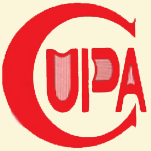材料力学 - 缩编国外精品教材 - 中国高校教材图书网
| 内容简介: |
本书是美国Robert L.Mort教授所著的《Applied Strength of Materials(Fourth Edition)》教材的缩编版。根据我国高等理工科院校材料力学课程教学大纲的要求,本着尽可能地保留原书风格,有利教学和减少学生的经济负担的原则缩编而成。
本书内容包括:材料强度的基本概念、材料特性、正应力下的构件设计、轴向变形和热应力、扭转剪应力和扭转变形、梁的剪力和弯矩、截面形心和惯性矩、弯曲应力、梁的剪应力、组合应力的特殊情形、组合应力的一般情形和摩尔圆、梁的挠度、静不定梁、柱和附录。
本书可以用作高等院校力学、机械,土木、电气、材料等类专业进行材料力学双语教学的教材,也可供广大工程技术人员参考使用。
|
| 作者简介: |
|
|
| 章节目录: |
Preface
1 Basic Concepts in Strength of Materials
1-1 Objective of this Book!to Ensure Safety
1-2 Objectives of this Chapter
1-3 Problem-Solving Procedure
1-4 Basic Unit Systems
1-5 Relationship Among Mass, Force, and Weight
1-6 The Concept of Stress
1-7 Direct Normal Stress
1-8 Stress Elements for Direct Normal Stresses
1-9 Direct Shear Stress
1-10 Stress Elements for Shear Stresses
1-11 Bearing Stress
1-12 The Concept of Strain
1-13 Poisson's Ratio
1-14 Shearing Strain
1-15 Modulus of Elasticity
1-16 Modulus of Elasticity in Shear
1-17 Preferred Sizes and Standard Shapes
1-18 Experimental and Computational Stress Analysis
Problems
2 Design Properties of Materials
2-1 Objectives of this Chapter
2-2 Metals in Mechanical and Structural Design
2-3 Steel
2-4 Cast Iron
2-5 Aluminum
2-6 Copper, Brass, and Bronze
2-7 Zinc, Magnesium, and Titanium
2-8 Nonmetals in Engineering Design
2-9 Wood
2-10 Concrete
2-11 Plastics
2-12 Composites
Problems
3 Design of Members under Direct Stresses
3-1 Objectives of this Chapter
3-2 Design of Members under Direct Tension or Compression
3-3 Design Normal Stresses
3-4 Design Factor
3-5 Design Approaches and Guidelines for Design Factors
3-6 Methods of Computing Design Stress
3-7 Design Shear Stress
3-8 Design Bearing Stress
3-9 Stress Concentration Factors
Problems
4 Axial Deformation and Thermal Stress
4-1 Objectives of this Chapter
4-2 Elastic Deformation in Tension and Compression Members
4-3 Deformation Due to Temperature Changes
4-4 Thermal Stress
4-5 Members Made of More Than One Material
Problems
5 Torsional Shear Stress and Torsional Deformation
5-1 Objectives of this Chapter
5-2 Torque, Power, and Rotational Speed
5-3 Torsional Shear Stress in Members with Circular Cross Sections
5-4 Development of the Torsional Shear Stress Formula
5-5 Polar Moment of Inertia for Solid Circular Bars
5-6 Torsional Shear Stress and Polar Moment of Inertia for Hollow Circular Bars
5-7 Design of Circular Members under Torsion
5-8 Comparison of Solid and Hollow Circular Members
5-9 Twisting!Elastic Torsional Deformation
Problems
Computer Assignments
6 Shearing Forces and Bending Moments in Beams
6-1 Objectives of this Chapter
6-2 Beam Loading, Supports, and Types of Beams
6-3 Reactions at Supports
6-4 Sheafing Forces and Bending Moments for Concentrated Loads
6-5 Guidelines for Drawing Beam Diagrams for Concentrated Loads
6-6 Sheafing Forces and Bending Moments for Distributed Loads
6-7 General Shapes Found in Bending Moment Diagrams
6-8 Sheafing Forces and Bending Moments for Cantilever Beams
Problems
7 Centroids and Moments of Inertia of Areas
7-1 Objectives of this Chapter
7-2 The Concept of Centroid!Simple Shapes
7-3 Centroid of Complex Shapes
7-4 The Concept of Moment of Inertia
7-5 Moment of Inertia of Composite Shapes whose Parts have the Same Centroidal Axis
7-6 Moment of Inertia for Composite Shapes!General Case--Use of the Parallel Axis Theorem
7-7 Mathematical Definition of Moment of Inertia
7-8 Moment of Inertia for Shapes with all Rectangular Parts
7-9 Radius of Gyration
Problems
Computer Assignments
8 Stress Due to Bending
8-1 Objectives of this Chapter
8-2 The Flexure Formula
8-3 Conditions on the Use of the Flexure Formula
8-4 Stress Distribution on a Cross Section of a Beam
8-5 Derivation of the Flexure Formula
8-6 Applications--Beam Analysis
8-7 Applications--Beam Design and Design Stresses
8-8 Section Modulus and Design Procedures
Problems
Computer Assignments
9 Shearing Stresses in Beams
9-1 Objectives of this Chapter
9-2 Importance of Shearing Stresses in Beams
9-3 The General Shear Formula
9-4 Distribution of Shearing Stress in Beams
9-5 Development of the General Shear Formula
9-6 Special Shear Formulas
9-7 Design Shear Stress
Problems
10 Special Cases of Combined Stresses
10-1 Objectives of this Chapter
10-2 The Stress Element
10-3 Stress Distribution Created by Basic Stresses
10-4 Combined Normal Stresses
10-5 Combined Normal and Shear Stresses
Problems
11 The General Case of Combined Stress and Mohr's Circle
11-1 Objectives of this Chapter
11-2 Creating the Initial Stress Element
11-3 Equations for Stresses in Any Direction
11-4 Principal Stresses
11-5 Maximum Shear Stress
11-6 Mohr's Circle for Stress
11-7 Special Case in which Both Principal Stresses have the Same Sign
11-8 The Maximum Shear Stress Theory of Failure
Problems
Computer Assignments
12 Deflection of Beams
12-1 Objectives of this Chapter
12-2 The Need for Considering Beam Deflections
12-3 Definition of Terms
12-4 Beam Deflections Using the Formula Method
12-5 Superposition Using Deflection Formulas
12-6 Basic Principles for Beam Deflection by Successive Integration Method
12-7 Beam Deflections!Successive Integration Method--General Approach
Problems
Computer Assignments
13 Statically Indeterminate Beams
13-1 Objectives of this Chapter
13-2 Formulas for Statically Indeterminate Beams
13-3 Superposition Method
Problems
Computer Assignment
14 Columns
14-1 Objectives of This Chapter
14-2 Slenderness Ratio
14-3 Transition Slenderness Ratio
14-4 The Euler Formula for Long Columns
14-5 The J B Johnson Formula for Short Columns
14-6 Summary--Buckling Formulas
14-7 Design Factors for Columns and Allowable Load
14-8 Summary--Method of Analyzing Columns
14-9 Efficient Shapes for Column Cross Sections
Problems
Computer Assignments
Appendix
Answers to Selected Problems
縮僥屶隔傍苧
|
| 精彩片段: |
|
|
| 书 评: |
|
|
| 其 它: |
|
|
|

 中国大学出版社协会 |
首页 |
宏观指导 |
出版社天地 |
图书代办站 |
教材图书信息 |
教材图书评论 |
在线订购 |
教材征订
中国大学出版社协会 |
首页 |
宏观指导 |
出版社天地 |
图书代办站 |
教材图书信息 |
教材图书评论 |
在线订购 |
教材征订

